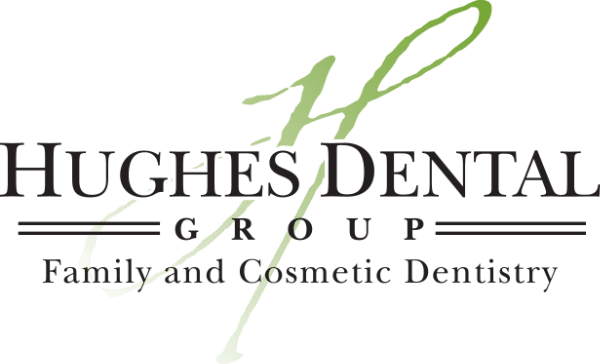What are oral cancer detection methods, and how do they help identify this serious condition? Oral cancer detection methods encompass a variety of medical procedures used by healthcare professionals to identify cancerous cells in the mouth. These methods are crucial for early diagnosis, potentially leading to more effective management of the disease.
Oral Cancer Detection Methods: Visual Examination by Healthcare Professionals
One of the primary oral cancer detection methods involves a visual examination by healthcare professionals. During routine dental or medical check-ups, doctors and dentists carefully inspect the inside of your mouth to look for any signs of oral cancer. This includes checking for any unusual sores, lumps, or discolorations on the gums, tongue, lips, and other areas of the mouth. The visual examination is a non-invasive procedure that allows healthcare providers to identify potential issues that may require further investigation.
The importance of regular screenings cannot be overstated, as early detection significantly improves the chances of successful treatment outcomes. To understand more about why these screenings are crucial, consider reading about the Benefits of Oral Cancer Screening: Why It’s Important.
Tissue Biopsy Procedures
Tissue biopsy procedures are a critical component of oral cancer detection methods. During this process, a small sample of tissue is removed from an area in the mouth that appears suspicious. This sample is then sent to a laboratory where pathologists examine it under a microscope to determine if cancerous cells are present. This method is considered highly reliable because it provides a definitive diagnosis, allowing healthcare professionals to accurately identify and characterize the presence of cancer.
The procedure is typically performed under local anesthesia and is relatively quick. However, the results from the biopsy can take some time as detailed analysis is needed to ensure accurate diagnosis. Understanding the role of tissue biopsies in the context of oral cancer detection methods can be crucial for anyone looking to learn more about how this serious disease is diagnosed and assessed. For more detailed information on how oral cancer screening is conducted, you can Get Screened for Oral Cancer in Leo.
Brush Biopsy Techniques
Brush biopsy techniques are a non-invasive approach commonly used in oral cancer detection methods. This procedure involves gently brushing the surface of an area in the mouth to collect cells. The collected cells are then analyzed under a microscope to detect any abnormalities that could indicate the presence of cancer. Brush biopsy is valued for its simplicity and minimal discomfort, making it a widely accepted method among various oral cancer detection strategies.
Imaging Tests Used in Diagnosis
Imaging tests play a crucial role in the array of oral cancer detection methods. These diagnostic tools, including X-rays, CT scans, MRI scans, and PET scans, help healthcare professionals get a detailed view of the structures inside the mouth and neck. By providing clear images of both hard and soft tissues, these tests are invaluable for identifying abnormal growths and determining the extent of cancer spread. This information is essential for accurate diagnosis and planning the appropriate course of action. For more information on oral health and cancer detection, consider visiting Hughes Dental Group Family and Cosmetic Dentistry or check out Leo Dentist.
Light-Based Detection Technologies
Light-based detection technologies are increasingly recognized in the field of oral cancer detection methods. These technologies utilize specific wavelengths of light to illuminate oral tissues, highlighting abnormal cells that might not be visible to the naked eye. By enhancing the contrast between healthy and potentially cancerous tissues, these methods aim to assist healthcare professionals in identifying areas that may require further investigation. This approach is one of several advancements that contribute to the early detection and management of oral cancer.
Molecular Biomarker Analysis
Molecular biomarker analysis is emerging as a pivotal component among oral cancer detection methods. This advanced technique involves identifying specific biological markers, typically proteins or genetic mutations, that are often present in abnormal cells. By analyzing these biomarkers, healthcare professionals can detect oral cancer at an early stage, significantly improving the prognosis for patients. This method not only enhances the accuracy of diagnosis but also helps in customizing treatment plans tailored to the individual’s genetic makeup, thereby optimizing therapeutic outcomes.
Salivary Diagnostics in Oral Cancer
Salivary diagnostics is emerging as a pivotal component among oral cancer detection methods, offering a non-invasive and highly efficient approach to identifying oral cancer at an early stage. This technique analyzes biomarkers in saliva that are indicative of oral cancer, thereby facilitating early diagnosis and improving the chances of successful treatment. By utilizing advanced biochemical technologies, salivary diagnostics can detect the presence of specific proteins and RNA molecules associated with cancer cells, making it a valuable tool in the ongoing battle against oral cancer. This method not only enhances patient comfort by avoiding more invasive procedures but also significantly cuts down on diagnosis time.
Role of HPV Testing
The role of HPV testing has become increasingly significant in oral cancer detection methods. Human Papillomavirus (HPV) is known to be associated with a subset of oral cancers, particularly those occurring in the oropharyngeal region. By identifying the presence of high-risk HPV types, healthcare providers can better assess the risk of malignancy in patients presenting with suspicious lesions. This method not only enhances the accuracy of oral cancer screenings but also aids in the early diagnosis and management of the disease, potentially improving patient outcomes.
Genetic Mutation Screening Methods
Genetic mutation screening methods are becoming increasingly integral to oral cancer detection methods. These advanced techniques involve analyzing DNA samples to identify specific genetic alterations that are known to contribute to the development of oral cancer. By pinpointing these mutations early, healthcare providers can not only diagnose oral cancer more accurately but also tailor personalized treatment plans that target the genetic underpinnings of the disease. This approach enhances the effectiveness of treatment and improves patient outcomes, making genetic mutation screening a vital component in the fight against oral cancer.
Conclusion
Exploring oral cancer detection methods is crucial for awareness. For further inquiries, call us at 260-627-5345 or read our reviews on Google Maps.

